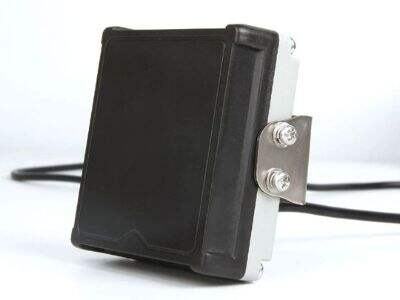Radar liquid level sensors are essential for measuring liquid levels of viscous material such as honey or molasses. These are radar sensor that gauge the amount of liquid in a container by using radar waves. But their sensitivity may be reduced by the viscosity of the liquid for the measurement.
The Viscosity Impact on the Accuracy of Radar Liquid Level Sensors
Viscosity is a property of a liquid that describes its resistance to flow. More plainly, it’s a measure of how thick or thin a liquid is. KYSAIL developed its 77G Radar Sensor, which most closely resembles a funnel, to solve those problems: when passing radar waves through a viscous liquid (like syrup), the waves could be distorted and the liquid absorb the wave, resulting in faulty readings from the sensor.
The Influence of Temperature on Performance on Radar Level Sensor –liquid Material
Radar level gauge for liquids are also affected by temperature to a great extent. The viscosity of a liquid changes as its temperature changes. For instance, is thicker to flow at lower temperature and thin to drip more easily at higher temperature.
This change in viscosity can affect the accuracy of radar tank level gauges, in that the radar waves would have different properties in liquids of the varying temperatures to interfere in drawing accurate readings. By doing so, appropriate compensation (for these temperature-related shifts) is facilitated to provide more accurate readings.
Some Insight into the Influence of Radar Frequency on Sensitivity in Viscous Media
Frequency of the radar waves employed is a third possible factor that can influence the overall 85 performance of these radar liquid-level sensors for viscous media. The radar liquid level sensor work on a deal of frequencies which can even affect the precision of the sensor in detecting the liquid levels.
Higher frequencies are better for level measurement in thin liquids and lower frequencies for thicker, viscous substances. The above, appropriate frequency can be chosen so as to the liquid (whose viscosity is to be measured).
Significance of Sensor Deployment and Upkeep for Appropriate Measurement
Correct installation and periodic maintenance is critical to the reliable operation of radar liquid level sensors in thickened and viscous media. The telescope sensor should be perfectly placed within the container to avert the influence of walls or obstacles, which possess a chance of disturbing the radar waves.
Further, routine cleaning and calibration of the sensor is required to maintain performance. The sensor can't be obstructed and can't have any build up of residue or debris disrupting the wave lengths of radar it sends and receives resulting in the false measurements.
Influences on Signal Attenuation in Radar Level Gauges Using Liquid Level in Viscous Medium
Another aspect that can alter the accuracy of the radar liquid level sensor for viscous liquids is the signal loss, or weaken of the radar wave when passed through a medium. In viscous samples, radar waves may be absorbed or scattered, which results in the sensor detecting lower signals.
Table of Contents
- The Viscosity Impact on the Accuracy of Radar Liquid Level Sensors
- The Influence of Temperature on Performance on Radar Level Sensor –liquid Material
- Some Insight into the Influence of Radar Frequency on Sensitivity in Viscous Media
- Significance of Sensor Deployment and Upkeep for Appropriate Measurement
- Influences on Signal Attenuation in Radar Level Gauges Using Liquid Level in Viscous Medium

 EN
EN
 AR
AR
 HR
HR
 CS
CS
 DA
DA
 NL
NL
 FI
FI
 FR
FR
 DE
DE
 EL
EL
 IT
IT
 JA
JA
 KO
KO
 NO
NO
 PL
PL
 PT
PT
 RO
RO
 RU
RU
 ES
ES
 SV
SV
 IW
IW
 ID
ID
 LV
LV
 LT
LT
 SR
SR
 SK
SK
 SL
SL
 UK
UK
 SQ
SQ
 ET
ET
 HU
HU
 TH
TH
 TR
TR
 FA
FA
 AF
AF
 MK
MK
 KA
KA
 UR
UR
 BN
BN
